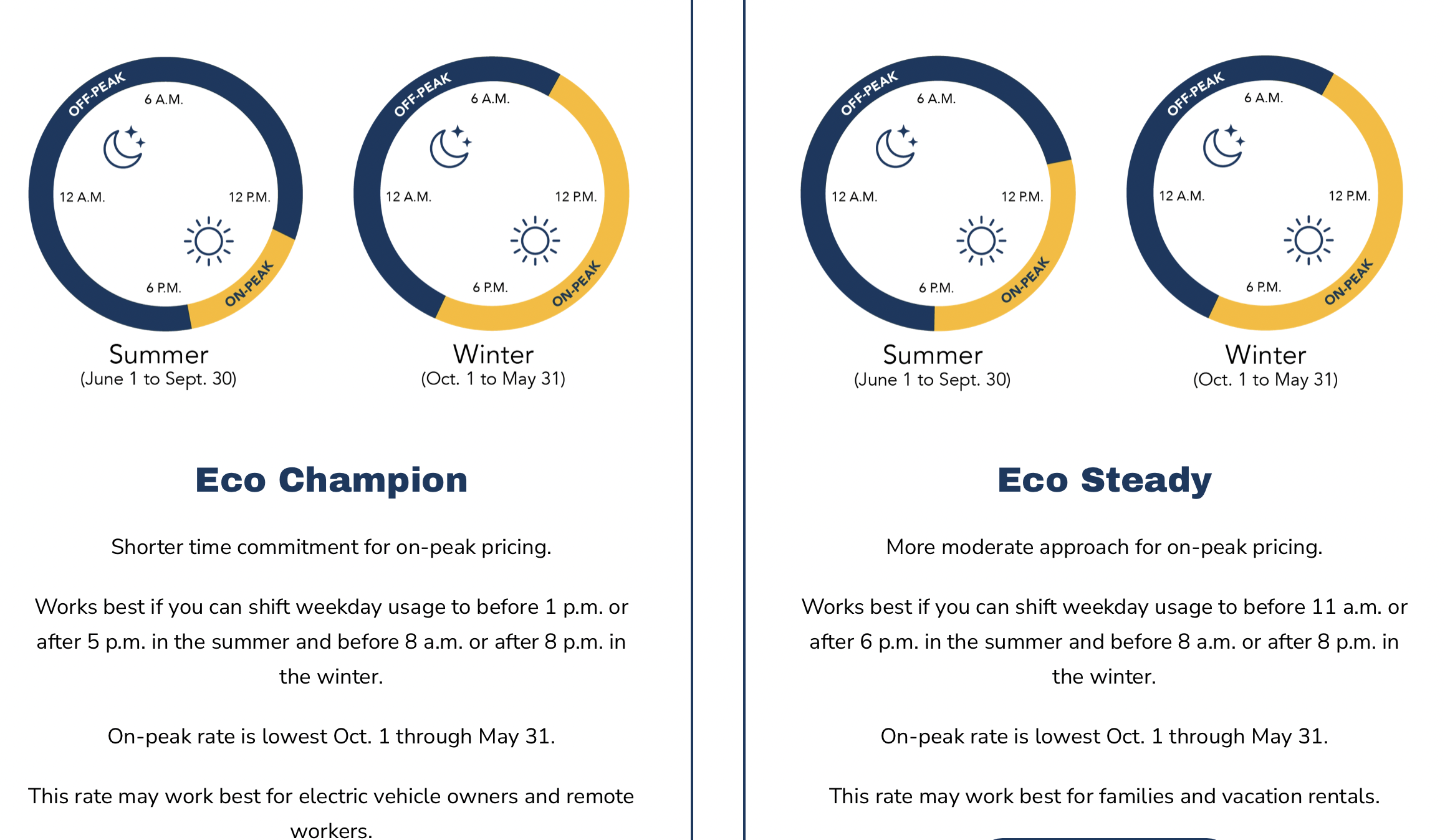Sustainable food and carbon footprint in menu planning – meer.com

Report on Sustainable Food Systems and the Achievement of Sustainable Development Goals
This report analyzes the challenges and opportunities in global food production and consumption, with a specific focus on achieving the United Nations’ Sustainable Development Goals (SDGs), particularly SDG 2 (Zero Hunger). It examines the environmental and social impacts of current food systems and outlines strategies for a sustainable transition.
Challenges to Achieving SDG 2: Zero Hunger
The goal of ending hunger by 2050 is threatened by population growth, resource depletion, climate change, and systemic inefficiencies. These challenges are interconnected and require a holistic approach that integrates multiple SDGs.
H3: Increasing Demand and Resource Depletion
The Food and Agriculture Organization (FAO) projects that a 60% increase in food production is necessary to feed a global population expected to reach 10 billion. This demand places immense pressure on finite natural resources, undermining SDG 6 (Clean Water and Sanitation) and SDG 15 (Life on Land).
- Resource Strain: Conventional agriculture contributes to deforestation, soil degradation, and excessive water consumption.
- Case Study – California: As a major global food producer, prolonged droughts in California have led to reduced agricultural output and increased global food prices, demonstrating the vulnerability of centralized food systems.
H3: Climate Change Impacts on Food Security (SDG 13: Climate Action)
The food sector is a significant contributor to climate change, accounting for approximately 30% of global greenhouse gas emissions. Simultaneously, climate change adversely affects agricultural productivity, creating a negative feedback loop that jeopardizes food security.
- Reduced Yields: Extreme weather events, such as heatwaves in India and shifting climate patterns in Brazil, have diminished wheat and coffee production, respectively, causing global supply chain disruptions.
- Vicious Cycle: The environmental impact of food production accelerates climate change, which in turn reduces the capacity to produce food, directly hindering progress on SDG 2.
H3: Food Inequality and Waste (SDG 12: Responsible Consumption and Production)
A significant paradox exists within the global food system: while over 800 million people experience hunger, approximately 1.3 billion tons of food—one-third of all food produced—are wasted annually. This highlights a critical failure in distribution and consumption patterns.
- Distribution Inefficiency: The disparity between production and access points to systemic flaws in supply chains and resource allocation.
- Policy Intervention – France: Legislation requiring supermarkets to donate unsold food to charities exemplifies a successful policy for reducing waste and addressing food insecurity, aligning with SDG 12.3 to halve per capita global food waste.
Strategies for Sustainable Food Systems and SDG Alignment
Transitioning to sustainable food systems requires a multi-faceted approach encompassing production, consumption, and waste management.
H3: Sustainable Food Production Methods
Adopting eco-friendly agricultural practices is essential for reducing the carbon footprint of food production and ensuring long-term viability, directly supporting SDG 2.4 (ensure sustainable food production systems).
- Organic Farming and Agroecology: These methods enhance biodiversity and soil health while reducing reliance on chemical inputs.
- Vertical Farming: Urban-based vertical farms, such as those in Singapore, reduce land and water use, minimize transportation emissions, and enhance food security in densely populated areas.
- Carbon Capture: Innovative farming techniques can sequester carbon in the soil, mitigating climate change.
H3: Shifting Towards Sustainable Consumption Patterns
Consumer choices play a pivotal role in driving sustainable change. A shift towards plant-based and locally sourced foods can significantly reduce greenhouse gas emissions, as livestock production alone accounts for 14.5% of the global total.
- Case Study – Denmark: A national movement towards plant-based diets has resulted in a 30% reduction in meat consumption over the past decade, demonstrating the potential for large-scale consumer shifts to benefit both the environment (SDG 13) and public health (SDG 3).
- Local Sourcing: Prioritizing local and seasonal products reduces “food miles” and supports local economies (SDG 8: Decent Work and Economic Growth).
H3: Effective Food Waste Management
Reducing food waste is a critical component of SDG 12. This involves interventions at both the consumer and systemic levels to create a more circular food economy.
- Consumer Actions: Improved meal planning, proper food storage, and portion control are effective individual strategies.
- Systemic Solutions – South Korea: A “pay-as-you-throw” system for food waste incentivizes households to reduce waste. The collected material is then converted into animal feed and bioenergy, creating a circular model that aligns with SDG 11 (Sustainable Cities and Communities) and SDG 12.
Analysis of Foods with High Carbon Footprints
Understanding the environmental impact of different food types is crucial for making informed choices that support the SDGs.
H3: Foods with the Highest Environmental Impact
-
Animal Products (Red Meat and Dairy)
- Beef: ~60 kg CO₂e per kg
- Lamb: ~24 kg CO₂e per kg
- Cheese: ~24 kg CO₂e per kg
- Reason: High methane emissions from livestock, deforestation for grazing, and significant water and feed requirements.
-
Tropical and Imported Foods
- Avocados, bananas, coffee, and cocoa.
- Reason: High emissions from long-distance transportation (air freight) and association with deforestation.
-
Processed and Packaged Foods
- Chips, frozen meals, and soft drinks.
- Reason: Energy-intensive manufacturing processes and packaging materials contribute to a higher carbon footprint.
-
Rice and Sugar
- Reason: Rice cultivation releases significant amounts of methane, while sugar production is highly water- and energy-intensive.
Conclusion: A Collaborative Path Towards Zero Hunger
Achieving SDG 2 (Zero Hunger) is intrinsically linked to progress on other SDGs, including climate action, responsible consumption, and clean water. A sustainable food system is foundational to this effort. Key benefits include:
- Lower Carbon Emissions: Aligning with SDG 13 by choosing plant-based and locally sourced foods.
- Minimized Food Waste: Supporting SDG 12 through efficient planning and circular economy models.
- Support for Local & Ethical Sourcing: Bolstering local economies and promoting fair labor practices (SDG 8).
- Promotion of Healthier Choices: Contributing to SDG 3 (Good Health and Well-being) through diets rich in fresh, whole foods.
A global transformation of food systems requires a concerted effort from governments, businesses, and individuals. By adopting sustainable farming, shifting dietary patterns, and reducing waste, the global community can build a resilient, equitable, and environmentally sound food future for all.
1. Which SDGs are addressed or connected to the issues highlighted in the article?
SDG 2: Zero Hunger
- The article directly references the “United Nations’ Zero Hunger goal,” stating its aim to “end hunger, ensure food security, and promote sustainable agriculture.” It discusses the challenge of feeding a growing population, the prevalence of hunger with “over 800 million people” affected, and the need for sustainable food production systems.
SDG 12: Responsible Consumption and Production
- This goal is central to the article’s discussion on food waste and sustainable production. It highlights that “1.3 billion tons of food are wasted annually” and describes initiatives to combat this, such as France’s law requiring supermarkets to donate unsold food and South Korea’s food waste recycling system. The article also advocates for shifting consumption patterns, like Denmark’s move towards plant-based diets, which directly relates to responsible consumption.
SDG 13: Climate Action
- The article establishes a strong link between food systems and climate change. It states that “Agriculture and food production contribute to 30% of global greenhouse gas emissions” and details the high carbon footprint of specific foods like beef and dairy. It also explains how climate change impacts food security through “droughts, floods, and extreme weather events,” citing examples from India and California.
SDG 6: Clean Water and Sanitation
- The article touches upon this goal by discussing the strain on water resources due to agriculture. It points to “excessive water consumption” as a cause of long-term ecological damage and uses the example of “prolonged droughts” in California leading to “severe water shortages” that impact food production. The high water consumption for livestock and sugar production is also mentioned.
2. What specific targets under those SDGs can be identified based on the article’s content?
SDG 2: Zero Hunger
- Target 2.1: By 2030, end hunger and ensure access by all people, in particular the poor and people in vulnerable situations, including infants, to safe, nutritious and sufficient food all year round. The article identifies this target by stating that “over 800 million people suffer from hunger” despite enough food being produced globally, highlighting the issue of access and distribution.
- Target 2.4: By 2030, ensure sustainable food production systems and implement resilient agricultural practices that increase productivity and production, that help maintain ecosystems, that strengthen capacity for adaptation to climate change, extreme weather, drought, flooding and other disasters and that progressively improve land and soil quality. The article directly supports this by advocating for “eco-friendly agricultural practices such as organic farming, agroecology, vertical farming, and carbon capture techniques” and discussing the need for agriculture to be resilient to climate impacts like droughts and heatwaves.
SDG 12: Responsible Consumption and Production
- Target 12.3: By 2030, halve per capita global food waste at the retail and consumer levels and reduce food losses along production and supply chains, including post-harvest losses. This target is explicitly addressed when the article states, “Globally, one-third of all food produced is wasted,” and provides examples of solutions in France and South Korea aimed at reducing this waste.
- Target 12.2: By 2030, achieve the sustainable management and efficient use of natural resources. The article points to this target by describing how “our planet’s natural resources, including water, fertile soil, and biodiversity, are under extreme pressure” from conventional farming and deforestation.
- Target 12.5: By 2030, substantially reduce waste generation through prevention, reduction, recycling and reuse. South Korea’s “innovative food waste recycling system” that converts collected food waste into animal feed and bioenergy is a direct example of implementing this target.
SDG 13: Climate Action
- Target 13.1: Strengthen resilience and adaptive capacity to climate-related hazards and natural disasters in all countries. The article illustrates the need for this by describing how climate change leads to “reduced agricultural yields and food scarcity,” citing the impact of heatwaves on India’s wheat production and droughts on California’s farms.
- Target 13.2: Integrate climate change measures into national policies, strategies and planning. The article advocates for this by detailing the carbon footprint of various foods and promoting shifts in diet and agricultural practices (e.g., plant-based diets, local sourcing) as a way to lower emissions.
SDG 6: Clean Water and Sanitation
- Target 6.4: By 2030, substantially increase water-use efficiency across all sectors and ensure sustainable withdrawals and supply of freshwater to address water scarcity. This is implied through the discussion of “excessive water consumption” in agriculture and the “severe water shortages” in California, which highlight the need for more efficient water use in food production.
3. Are there any indicators mentioned or implied in the article that can be used to measure progress towards the identified targets?
SDG 2: Zero Hunger
- Indicator 2.1.1 (Prevalence of undernourishment): The article provides a direct metric for this indicator by stating, “over 800 million people suffer from hunger.”
- Indicator 2.4.1 (Proportion of agricultural area under productive and sustainable agriculture): Progress can be measured by tracking the adoption of practices mentioned in the article, such as “organic farming, agroecology, vertical farming,” as exemplified by Singapore’s vertical farms.
SDG 12: Responsible Consumption and Production
- Indicator 12.3.1 (Global food loss index): The article provides key data points for this indicator, stating that “1.3 billion tons of food are wasted annually” and “one-third of all food produced is wasted.” The success of policies like those in France and South Korea can be measured by reductions in these figures.
- Indicator 12.2.2 (Domestic material consumption): A shift in consumption patterns, such as “a 30% reduction in meat consumption over the last decade” in Denmark, serves as an indirect measure for reduced consumption of resource-intensive materials (feed, water, land for livestock).
SDG 13: Climate Action
- Indicator 13.2.2 (Total greenhouse gas emissions per year): The article provides specific data related to this indicator, noting that “Agriculture and food production contribute to 30% of global greenhouse gas emissions.” It also quantifies emissions for specific products: “producing 1 kg of beef generates approximately 60 kg CO₂e,” and 1 kg of lamb or cheese generates “around 24 kg CO₂e.”
SDG 6: Clean Water and Sanitation
- Indicator 6.4.2 (Level of water stress: freshwater withdrawal as a proportion of available freshwater resources): This is implied by the description of “prolonged droughts” and “severe water shortages” in California, which are direct manifestations of high water stress, exacerbated by agricultural water consumption.
4. Create a table with three columns titled ‘SDGs, Targets and Indicators” to present the findings from analyzing the article.
| SDGs | Targets | Indicators |
|---|---|---|
| SDG 2: Zero Hunger |
2.1: End hunger and ensure access to food.
2.4: Ensure sustainable food production systems and resilient agricultural practices. |
2.1.1: Prevalence of undernourishment (“over 800 million people suffer from hunger”).
2.4.1: Proportion of agricultural area under sustainable agriculture (adoption of organic farming, vertical farms). |
| SDG 12: Responsible Consumption and Production |
12.3: Halve per capita global food waste.
12.5: Substantially reduce waste generation. 12.2: Achieve sustainable management of natural resources. |
12.3.1: Global food loss index (“1.3 billion tons of food are wasted annually”).
12.5.1: National recycling rate (South Korea’s food waste recycling system). 12.2.2: Domestic material consumption (Denmark’s “30% reduction in meat consumption”). |
| SDG 13: Climate Action |
13.1: Strengthen resilience to climate-related hazards.
13.2: Integrate climate change measures into policies. |
13.1.2: Number of countries with national and local disaster risk reduction strategies (implied by need to adapt to droughts and heatwaves in California and India).
13.2.2: Total greenhouse gas emissions per year (Agriculture contributes “30% of global greenhouse gas emissions”; beef produces “60 kg CO₂e”). |
| SDG 6: Clean Water and Sanitation | 6.4: Substantially increase water-use efficiency and address water scarcity. | 6.4.2: Level of water stress (implied by “severe water shortages” in California due to agricultural water consumption). |
Source: meer.com

What is Your Reaction?
 Like
0
Like
0
 Dislike
0
Dislike
0
 Love
0
Love
0
 Funny
0
Funny
0
 Angry
0
Angry
0
 Sad
0
Sad
0
 Wow
0
Wow
0













































































